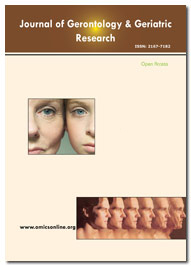Indexado em
- Abra o Portão J
- Genamics JournalSeek
- SafetyLit
- RefSeek
- Universidade de Hamdard
- EBSCO AZ
- OCLC- WorldCat
- publons
- Fundação de Genebra para Educação e Pesquisa Médica
- Euro Pub
- Google Scholar
Links Úteis
Compartilhe esta página
Folheto de jornal

Periódicos de Acesso Aberto
- Agro e Aquicultura
- Alimentos e Nutrição
- Bioinformática e Biologia de Sistemas
- Bioquímica
- Ciência de materiais
- Ciencias ambientais
- Ciências Clínicas
- Ciências Farmacêuticas
- Ciências gerais
- Ciências Médicas
- Cuidados de enfermagem e saúde
- Engenharia
- Genética e Biologia Molecular
- Gestão de negócios
- Imunologia e Microbiologia
- Neurociência e Psicologia
- Química
Abstrato
Eukaryotic Coupled Dinucleotide Contents Modulate Structural DNA Properties
Georg Hildenbrand*
Dinucleotides are known as determinants for different primary and physiochemical properties of DNA and for restricting affinities of proteins to DNA. It is known that these properties, such as stiffness, and bound proteins, such as transcription factors, have an impact on crucial biological processes like transcription regulation and 3D chromatin organization. As a result, the question arises as to how the vastly different dinucleotide contents of eukaryotic chromosomes can still provide consistent properties that result in comparable functions and threedimensional conformations. In this study, we test the hypothesis that coupled dinucleotide contents moderate each other's effects by influencing properties in opposite directions. We discovered sets of correlated and anticorrelated dinucleotide contents after analysing all chromosomes of eukaryotic species and taking into account bias from coding sequences and enhancers. We estimated the effects of this coupling on DNA properties by employing computational models. We viewed that as particularly unadulterated A/T dinucleotides known to impact histone situating and pertinent mediators and that the Roll property, which is known to impact histone partiality of DNA, is ideally directed. Through regulation of histone occupancy or other mechanisms, we conclude that dinucleotide contents may indirectly influence transcription and chromatin 3D conformation.